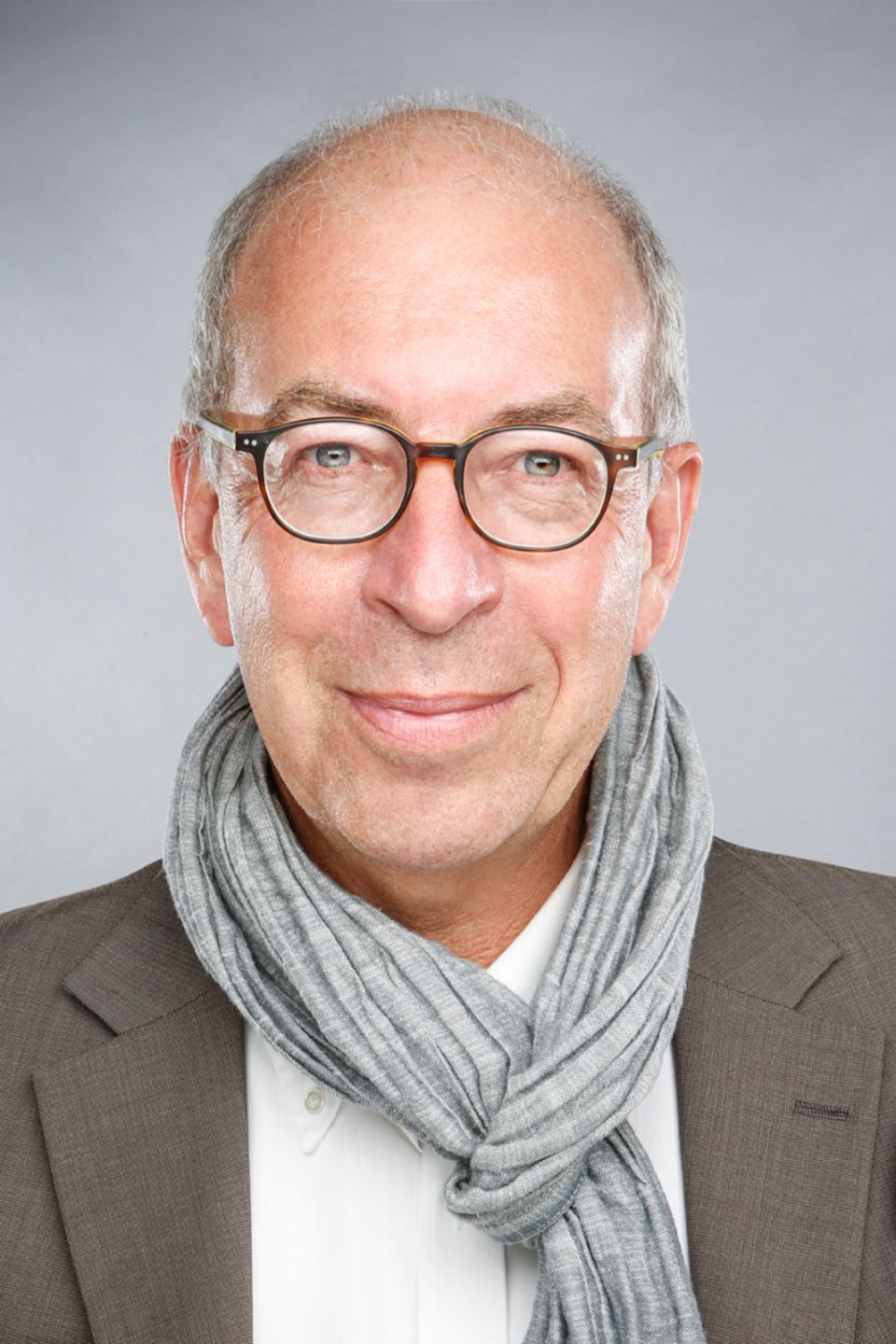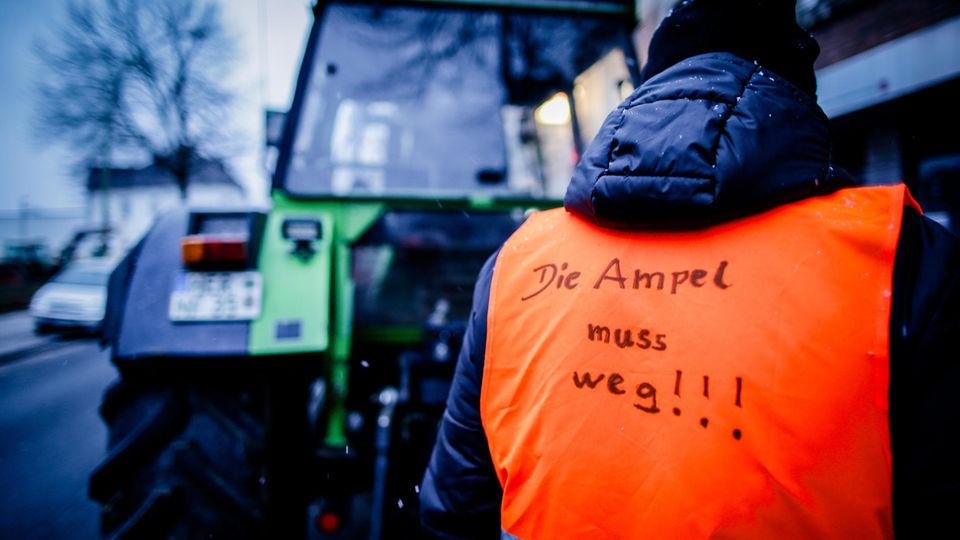What’s going on in Germany? Historian Martin Sabrow believes the current wave of protests can be explained. People today often feel like victims – and are afraid of some kind of future apocalypse.
Martin Sabrow (69) was director of the Leibniz Center for Contemporary Historical Research in Potsdam from 2004 to 2021 and professor of modern history and contemporary history at Berlin’s Humboldt University.
Mr. Sabrow, aggressive demonstrations, militant slogans, traffic lights dangling from gallows, the blockade of Robert Habeck’s ferry. Are we experiencing a new dimension of protest in Germany?
There have also been violent forms of protest earlier in the history of German democracy. We just don’t keep an eye on them anymore. The protests of the displaced people in the 1950s, the fight against rearmament, the anti-nuclear movement. In 1968, Kurt Georg Kiesinger was slapped by Beate Klarsfeld because of his Nazi past. The APO protests in the student movement were by no means always peaceful – when full professors at the universities were persecuted and locked in toilets, when the words “bundle and set fire to bundlers” were written at the Heidelberg Holy Spirit Church against the Freedom of Science Association, and when a bucket of yellow oil paint was placed over the head of a university professor in Berlin. On the surface, the protest at the time was certainly no less violent than the one Robert Habeck has now experienced in Schlüttsiel.
Why does the protest seem frighteningly different to us today?
The scale has changed. The frame of reference of the first post-war generation was the events of the war, the conflicts of the return from barbarism to civility. Our benchmark today is the Merkel era and the end of system competition and its ideological differences. During this time, a form of consensus democracy and pragmatic crisis management developed that today makes us experience the transition or return to an era of conflict democracy as abrupt and painful.
So nothing new in this matter?
But. The protest today has different patterns of action, lives from different perspectives and has a different social composition. Behind the similarity of the phenomena there is a qualitative change. It can be summarized as a contrast between interest and identity.
What does this contrast describe?
Beate Klarsfeld’s slap in the face served a specific interest, a clear goal, and it was linked to a political perspective of exposing and attacking the Nazi burden on the Federal Republic. And that is exactly what we are not experiencing in today’s form of protest. People in Schlüttsiel didn’t want to discuss Habeck, but instead wanted to make him contemptuous with the Western quote “Coward, come out!” From a political point of view, this was addressed to a man who was not responsible for the matter at issue and had no departmental responsibility. That would have been a different minister, that would have been a different party, but such circumstances play a secondary role in the political protest of our time. It also doesn’t matter that the protests had already largely achieved their stated goal of reversing the financial cuts for the farmers. Nevertheless, the movement does not end, but actually only begins after the declaration of its supporters. The protest in question is more self-sufficient than before. It creates a certain climate of solidarity among one another, i.e. a common identity, rather than pursuing a political perspective or political vision.

Prof. Dr. Martin Sabrow
© Andy Küchenmeister / Leibniz Center for Contemporary Historical Research Potsdam
And those who show solidarity, for example right-wing parties and groups, are of secondary importance to the protesters?
This cannot be lumped together and will perhaps quickly collapse the farmers’ protest; In any case, I wouldn’t draw an analogy to the right-wing radical rural people’s movement of the late Weimar Republic. However, the change from interest politics to identity reassurance in the so-called AfD paradox can also be seen in the farmers’ protest. The AfD supports him and at the same time demands in its basic program that subsidies for agriculture be abolished. The fact that the protest does not run screaming away from such supporters demonstrates the change in the shape of political protest: the focus is not on the pursuit of clearly formulated goals, but on mutual reinforcement and the assurance of a sense of togetherness based on demarcation and challenge.
One has the impression that protests today are directed against politicians, simply because they are politicians.
The protest is only superficially directed against the actors. Above all, it is driven by a basic social mood. You and I were socialized in a time when there was still a strong sense of progress that promised a better future. We have lost this idea. Today, the future is more apocalyptic and our headlines are not about the increase in food production or the improvement in road safety, but rather about global warming and the advance of authoritarian regimes. How do we greet each other on New Year’s Eve? We wish for a more peaceful year than the last, but we don’t trust in this hope ourselves. Our forward-looking thinking is predominantly filled with sadness, and we no longer openly imagine the future in the consciousness of unstoppable progress and certainly more as a consoling certainty, despite all the worries, that our children or grandchildren will fight it out better the defeated farmers sang to each other in 1525.
Then today it’s all about preserving property rights?
Yes. That’s why the protest always comes with a victim gesture. You feel like a victim of the circumstances, a victim of others, a victim of those in power. That is what accounts for this level of anger or depression that we are experiencing today. The protest of the present does not, in its self-image, open the door to a tangible future, but is primarily fed by a sustaining feeling of decay and decline.
Is that why there are no longer any saviors to whom the protest pays homage?
The concept of making things dance through protest usually gave rise to a kind of avant-garde thinking in earlier protest movements. There were leading figures to orientate on, pop culture-charged pillar saints who were called Rosa Luxemburg or Che Guevara or Antonio Gramsci or even Lenin and Mao. The populist protest of our time is precisely not avant-garde. So far, thank heavens, he is not creating any charismatic icons, but on the contrary is content to provoke and challenge everything that gives the appearance of being avant-garde or elite. The greatest goal that the alleged Reich citizen group around Henry XIII. According to reports, Prince Reuss’ plan was to break into the Reichstag and lead the assembled representatives out in handcuffs.
Trust in state institutions has fallen massively. Did this happen before?
Beate Klarsfeld’s slap in the face was not so much aimed at demeaning the institution of the state as at denouncing its occupation by the wrong people. There was also a fundamental trust in institutions in the student movement. They were just occupied by the wrong people; they had to be conquered by marching through the institutions. Today’s protest does not thrive on recognition of institutions and the inciting fear of their power, but rather on contempt for institutions. Protests are often primarily about simply showing those in power how dirty you can spit on them.
If politics as a whole is no longer accepted, aren’t you a little quick to absolve the current government of responsibility?
The tectonic shifts in political cultures depend less on the actors in the spotlight than is often thought. Seen in the light, the current traffic light has achieved something remarkable under the difficult conditions under which it was created. Three parties have come together that have no greater overlap with each other than with the opposition CDU. And the traffic light has undeniably achieved three major achievements, which are linked to the keywords Covid pandemic, Ukraine war and energy supply. Four years ago, the corona virus gave rise to fears of the onset of the unavailable, i.e. social collapse, and today it has the public excitement level of a wave of colds. In dealing with the Ukraine war, it was possible to achieve a certain fundamental consensus between the very different voices regarding the duration and extent of military support for Ukraine that Ukraine must be supported. The energy crisis that has been looming over us since 2022 has also been managed with surprising success. My God, twelve months ago we were sitting there wondering whether it would be better to take a cold shower to save gas. Today I read that the gas storage levels are at 89 percent in the middle of winter and I can be reassured.
Farmers protests
Farmers are paralyzing traffic nationwide – Day 1 of the week of action in pictures
However, the traffic light does not manage to present itself as a successful government. What would she have to do?
A government with parliamentary legitimacy must not think too short-term and must stick to its own agenda. As a rule, the time between elections is the time of opposition, in parliament and outside. This does not mean ignoring the protest with your eyes closed. Politicians must take these new forms of protest seriously without making them the yardstick for their own actions. It must counter them what, after the end of consensus democracy, a more polarized conflict democracy would be required to do: steadfastness in goal orientation, passion in mediation and willingness to compromise in implementation.
In the past, if a government was bad, you could expect it to be replaced by a democratic opposition. Now, for the first time, there are concerns that an extremist party, the AfD, will take power.
This perhaps touches on the crucial point that we are actually moving through a turning point on different levels. For a long time we have been supported by a social unity that also believed in the values of this democracy. That this would once again be challenged is unexpected and distressing in contemporary experience, but almost self-evident from a historical perspective. To blame the darkening of the political climate in Germany, Europe and beyond primarily on the actors on the political stage is not enough. The strength of the Federal German democracy compared to the Weimar Republic lies, on the one hand, in the effectiveness of the welfare state and, on the other hand, in the democratic self-image at the center of society that it has acquired over three quarters of a century. Taken together, this should be enough for us to react to the current signs of erosion with determination and calm at the same time.



